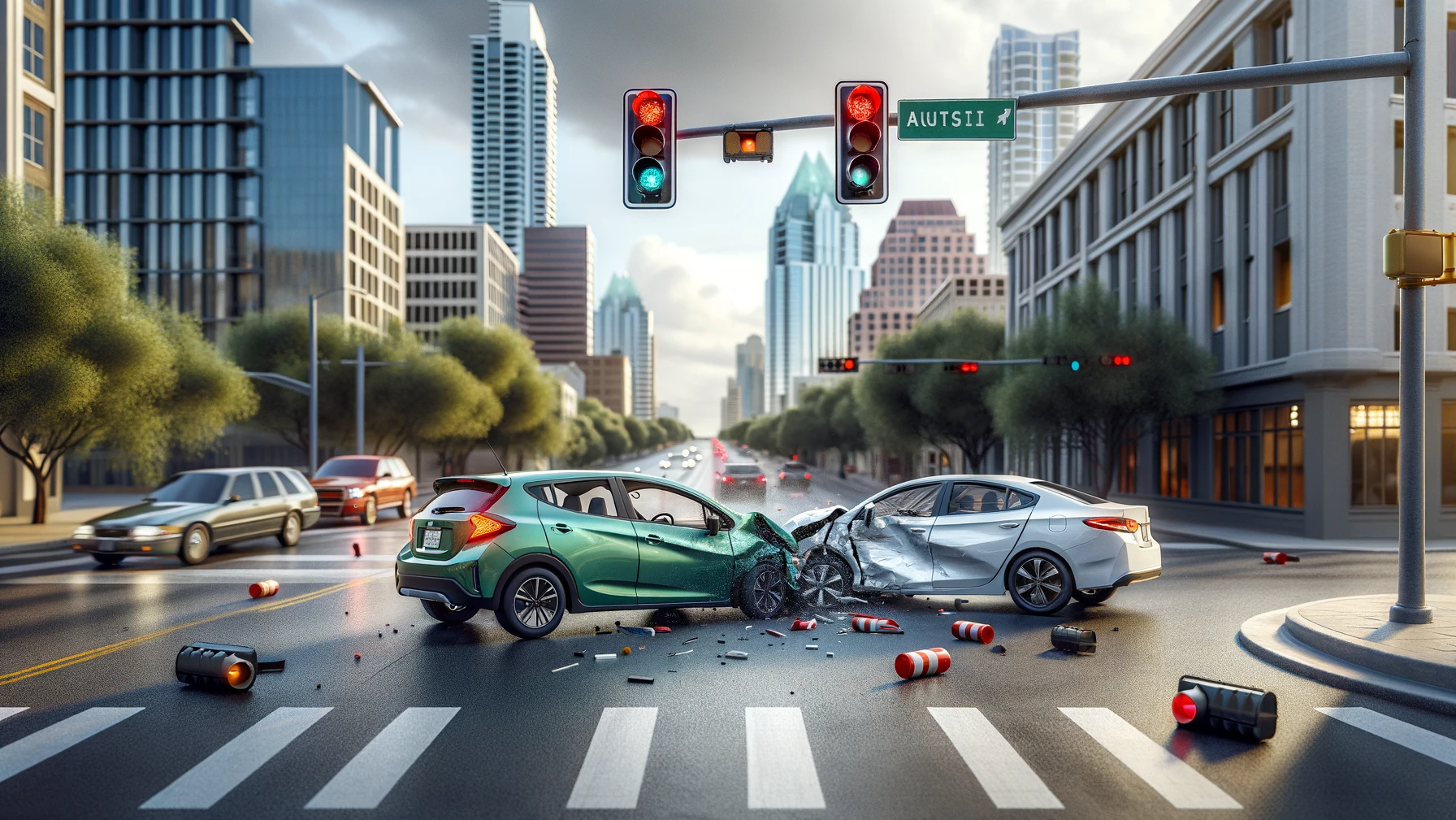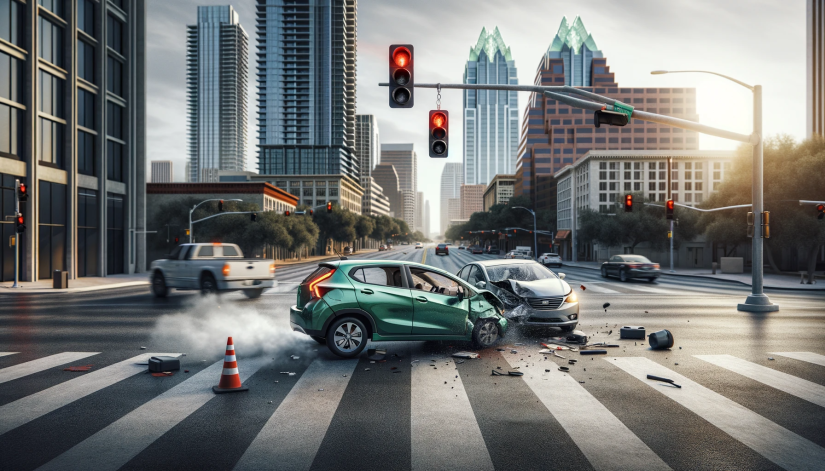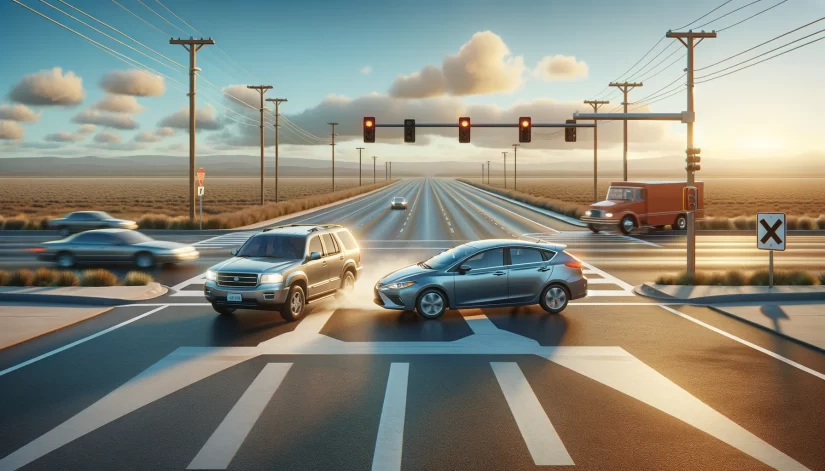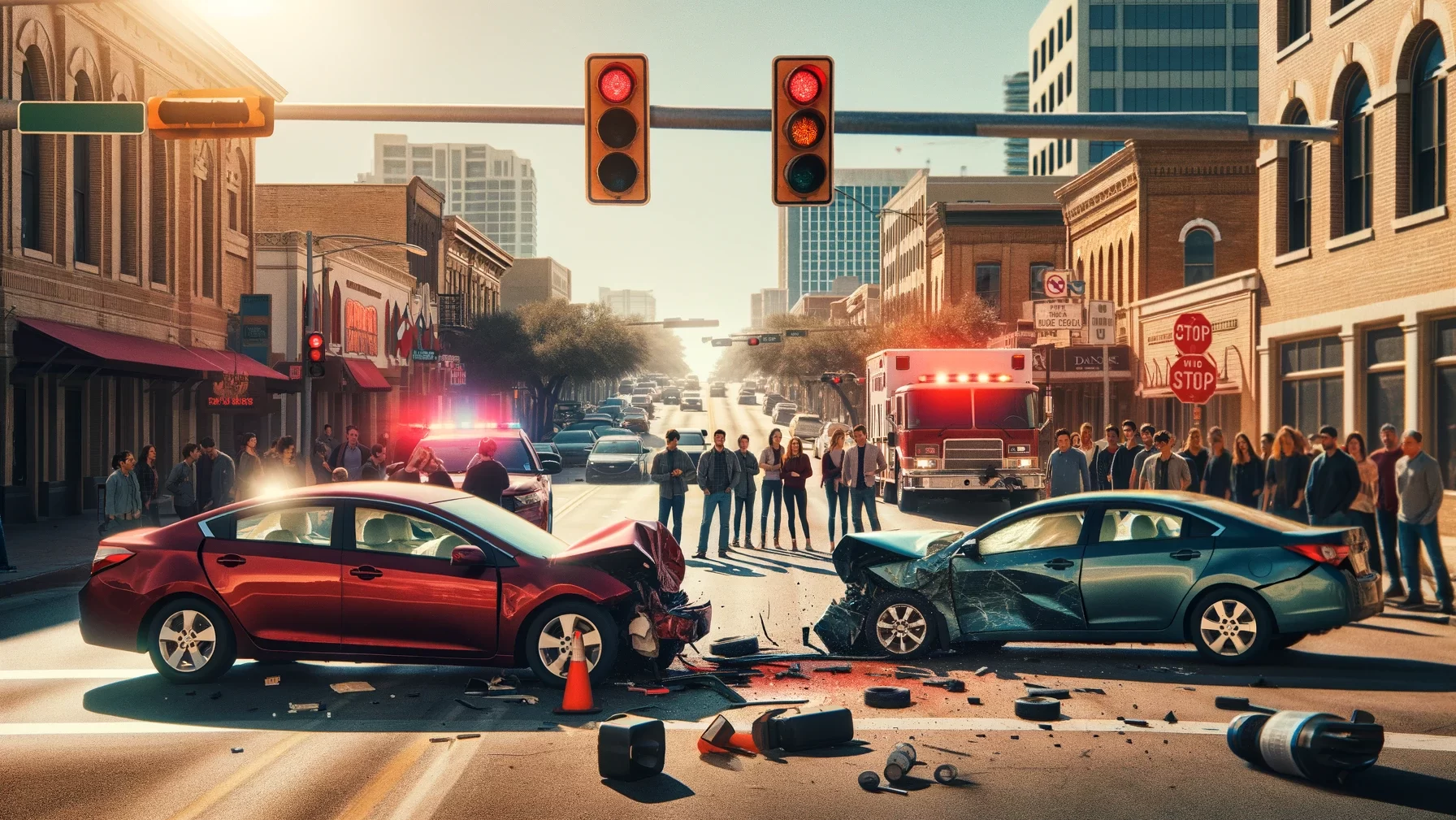Red Light Accidents in Texas: Legal Guide to Determining Fault
January 19, 2024

In Texas, determining fault in a red light accident is crucial for insurance claims and potential legal action. As a car accident attorney, I have witnessed the impact of these accidents on individuals’ lives and the importance of understanding the legal framework surrounding fault determination.
Here’s an overview of this guide:
- Key Factors in Determining Fault in Red Light Accidents
- Common Fault Scenarios in Red Light Accidents
- Red Light Rear-End Collision
- Failure to Yield Collision at a Traffic Light
- Speeding to Beat the Red Light
- Role of Insurance Companies in Red Light Car Accidents
- Seeking Legal Assistance for Red Light Accidents in Texas
Key Factors in Determining Fault in Red Light Accidents

When it comes to determining fault in red light accidents in Texas, insurance companies will review various types of evidence. This evidence may include:
- Police Reports: Police reports provide valuable information about the accident scene, including details about traffic signals, road conditions, weather conditions, and witness statements.
- Eyewitness Testimony: Eyewitness testimonies can provide critical perspectives on the accident, offering additional insight into how the incident occurred. Their accounts can support the case and help establish fault.
- Physical Evidence: Physical evidence such as skid marks, vehicle damage, and debris can provide important clues about the dynamics of the accident. Skid marks can indicate the speed and braking patterns of the vehicles involved, while vehicle damage can help reconstruct the sequence of events. Additionally, debris scattered at the accident scene can provide further evidence.
- Photographic and Video Evidence: In today’s digital age, photographs and videos captured at the accident scene can be invaluable in determining fault. They offer visual evidence that can help recreate the accident and provide a clearer understanding of the sequence of events. This evidence can be submitted by both drivers and bystanders.
- Negligence and Comparative Negligence: Negligence on the part of one or multiple drivers can significantly impact fault determination. Comparative negligence, where fault is divided among multiple parties, may also come into play. It is essential to explore the extent of negligence and determine how it contributed to the accident.
By analyzing these key factors, insurance companies, legal professionals, and law enforcement authorities can work together to objectively determine fault in red light accidents. This ensures a fair resolution for all parties involved and promotes road safety.
Common Fault Scenarios in Red Light Accidents
In red light accidents, several common scenarios determine fault.
Red Light Rear-End Collision
One common scenario is a rear-end collision, where a driver fails to maintain a safe distance from the vehicle in front and rear-ends it. This driver is often considered at fault for not leaving enough room or failing to react in time.
Failure to Yield Collision at a Traffic Light
Another common scenario is failure to yield, where a driver fails to yield the right of way at a traffic signal, or while making a turn, causing an accident.
Left-hand turns also cause many red light accidents when someone fails to yield the right of way.
Speeding to Beat the Red Light
Speeding is another common scenario of fault. Drivers are sometimes in a hurry. Unfortunately, this may cause a driver to accelerate when their light turns from green to yellow in an effort to cross the intersection before their light turns red. Unfortunately, this increases the likelihood of a car accident, as the driver may be unable to control their vehicle or react to unexpected situations.
Role of Insurance Companies in Red Light Car Accidents

Insurance companies play a significant role in determining fault in red light accidents. They conduct investigations based on the evidence provided to assign responsibility for the incident. However, it is important to understand that insurance companies prioritize their own interests, and their findings may not always align with the victim’s perspective.
It is important to remember that insurance companies have their own teams of adjusters and attorneys who are well-versed in claims handling. By seeking legal representation, victims can level the playing field and ensure their interests are represented adequately throughout the fault determination process.
Seeking Legal Assistance for Red Light Accidents in Texas

For individuals involved in red light accidents, seeking legal representation is crucial to protect their rights. A car accident attorney can help you gather evidence to support your claim. They can negotiate with insurance companies and advocate for just compensation. In cases where a resolution cannot be reached, a car accident attorney can represent you in court, fighting for their rights and seeking the appropriate legal remedies.